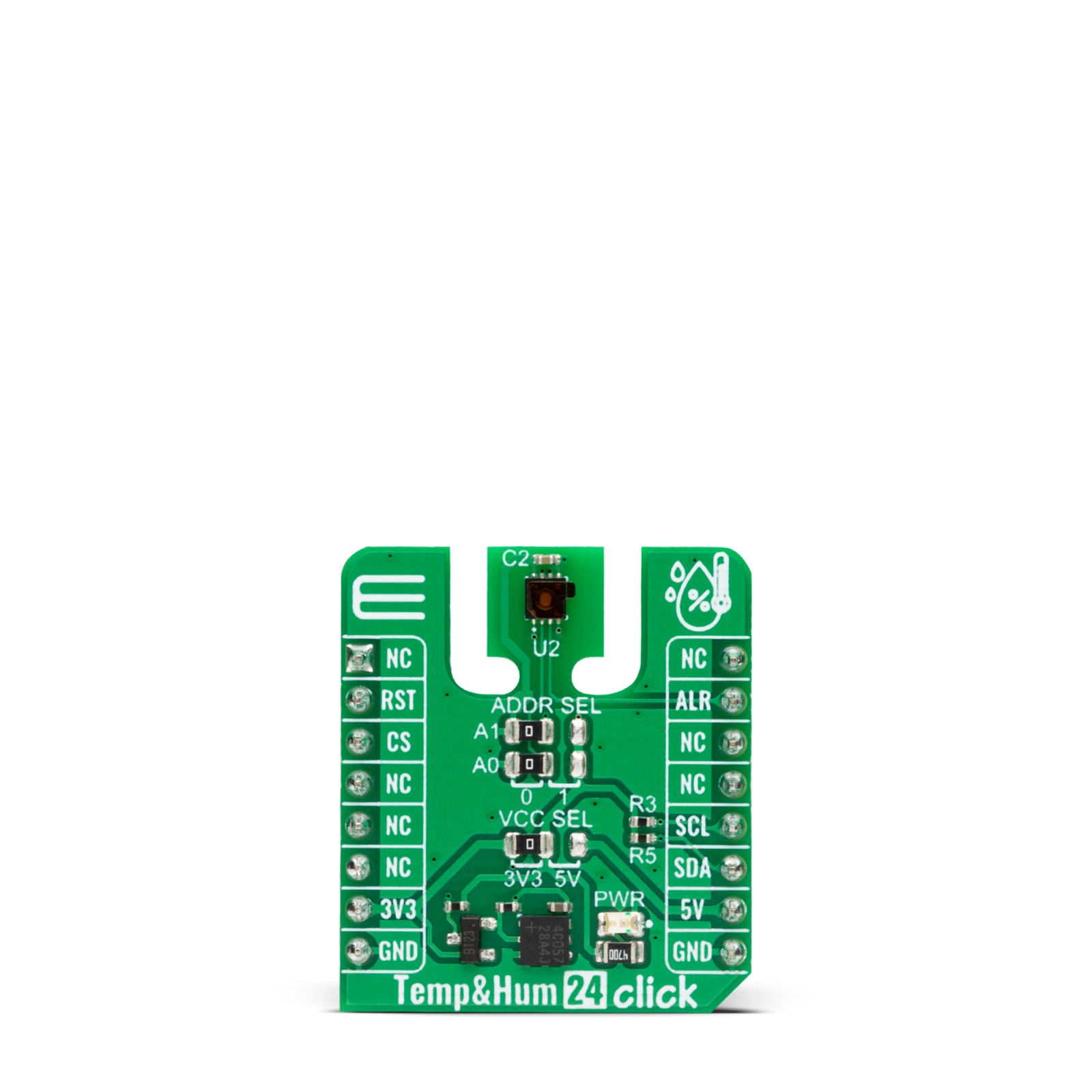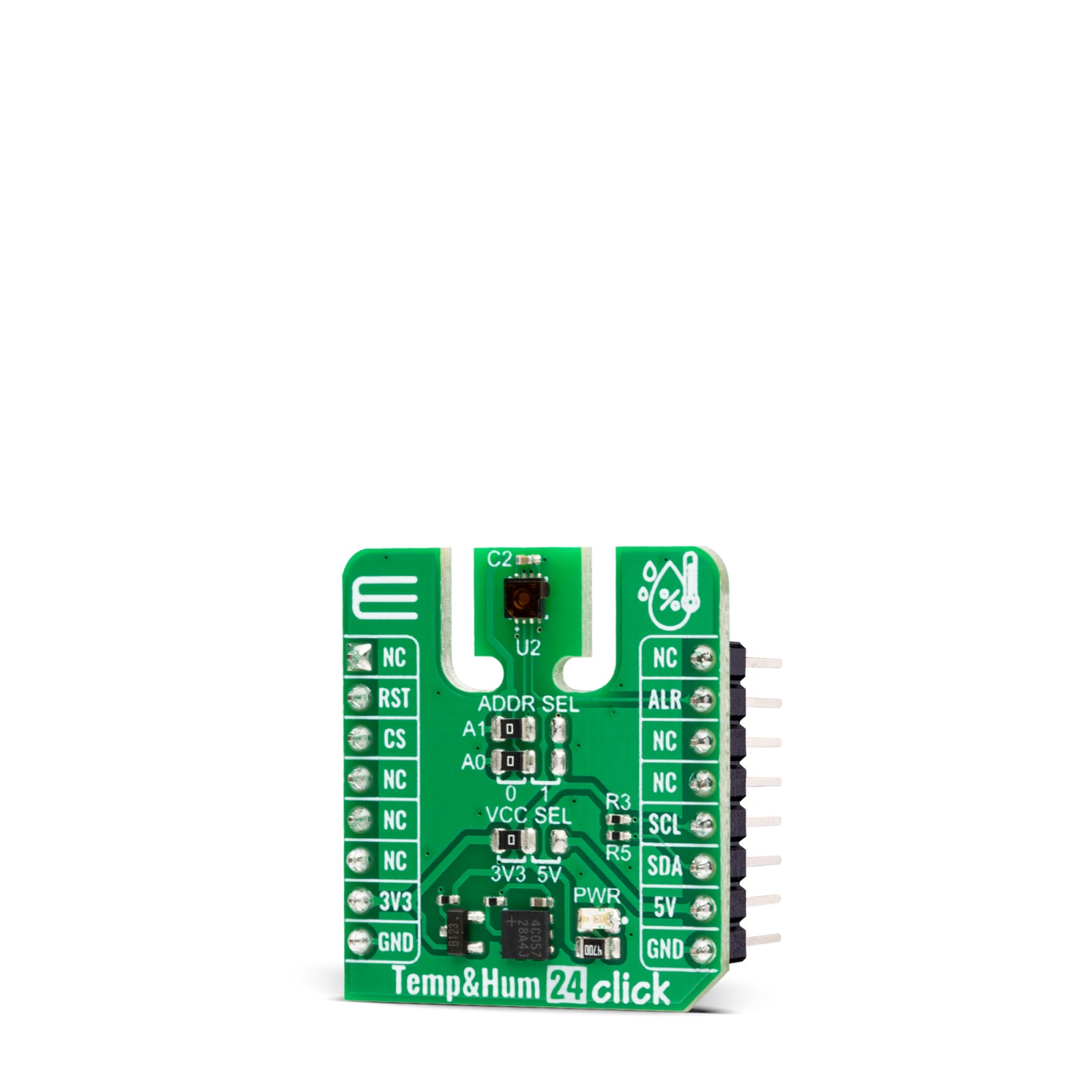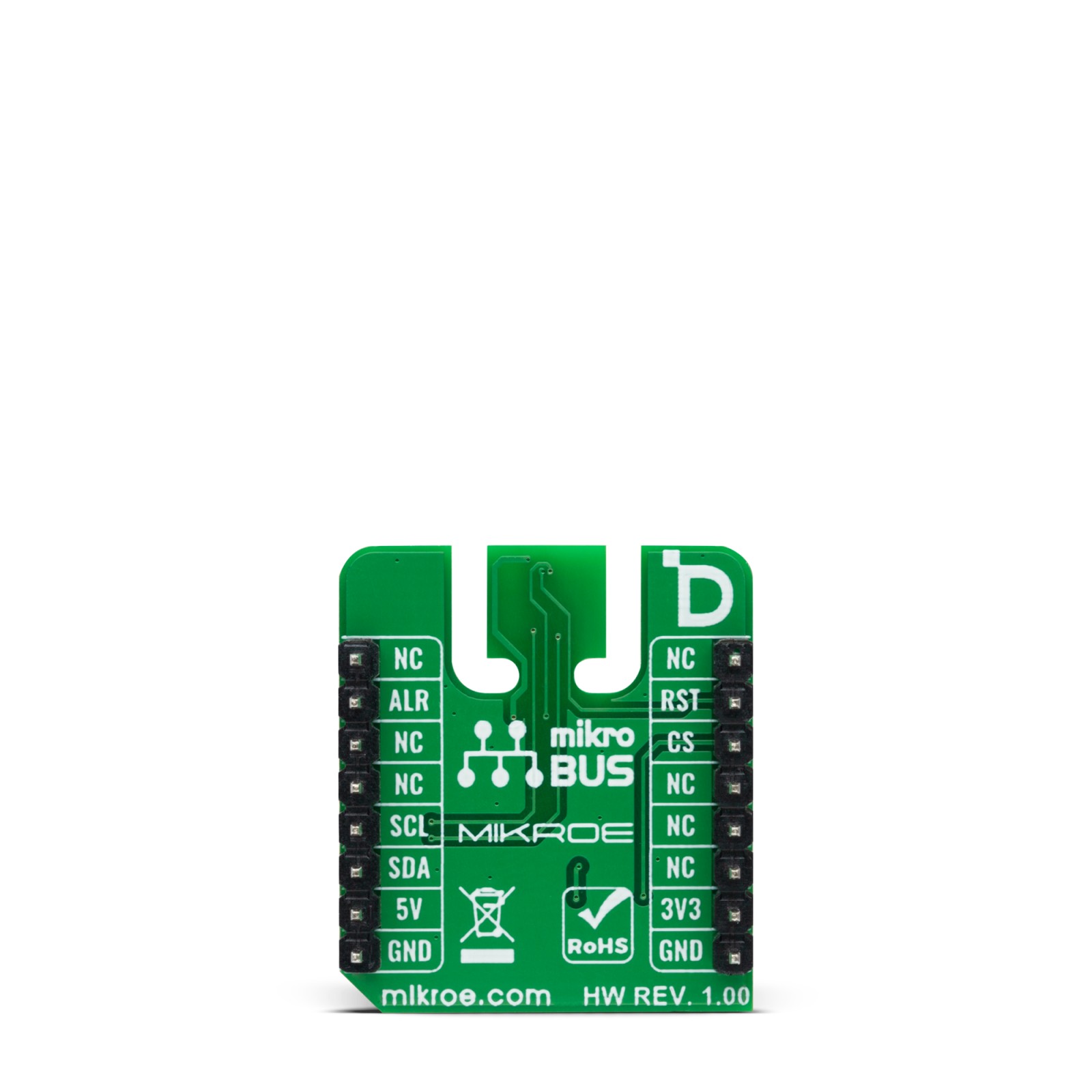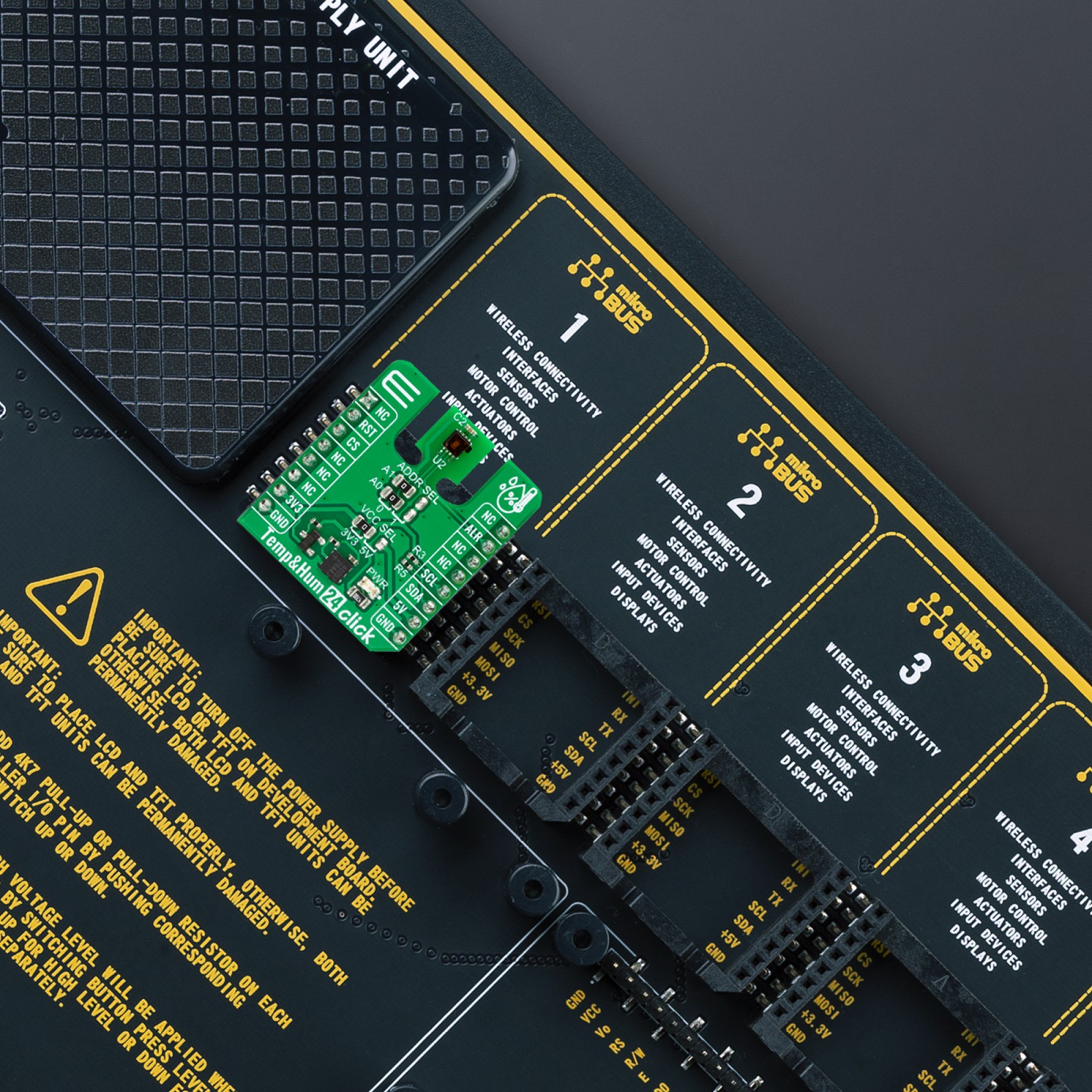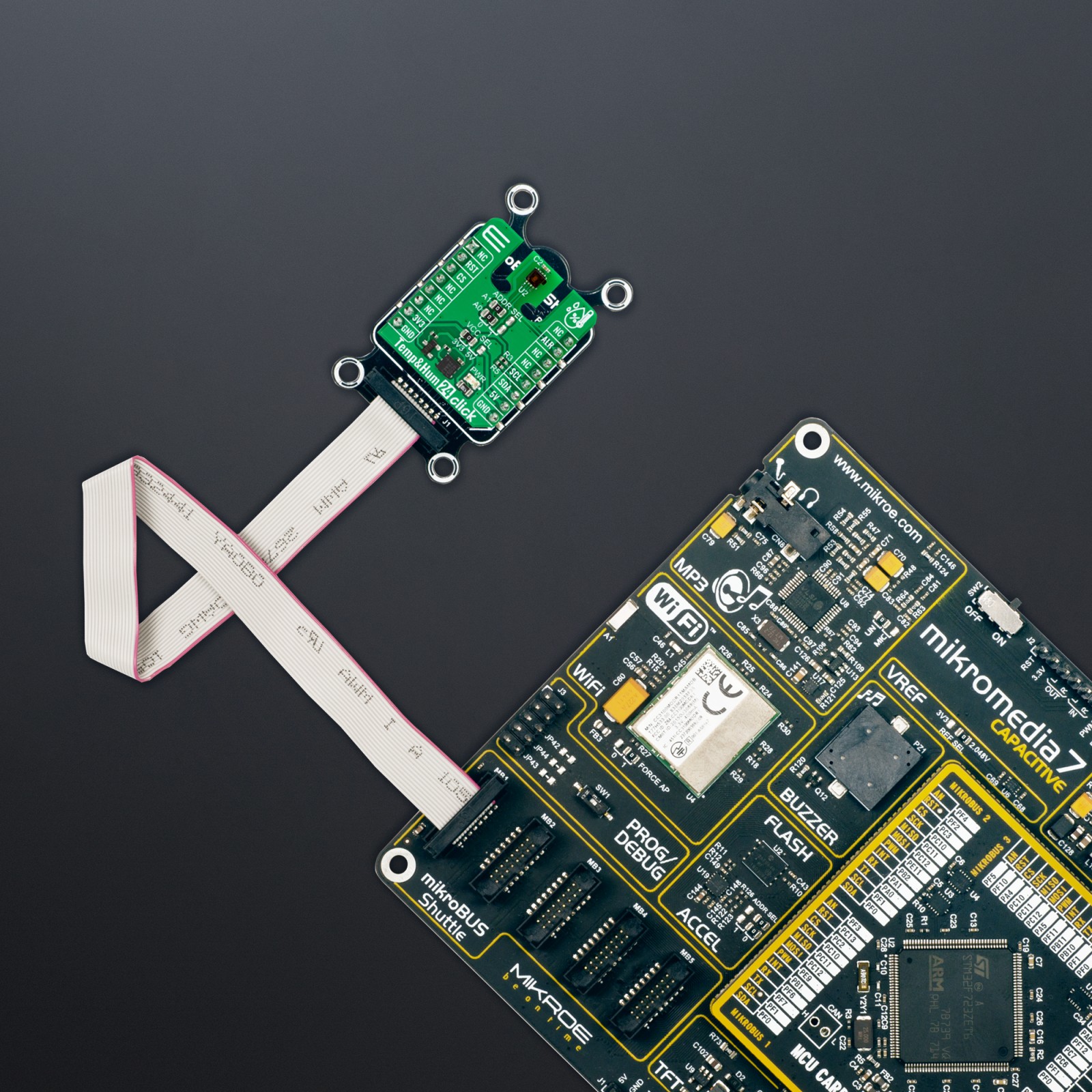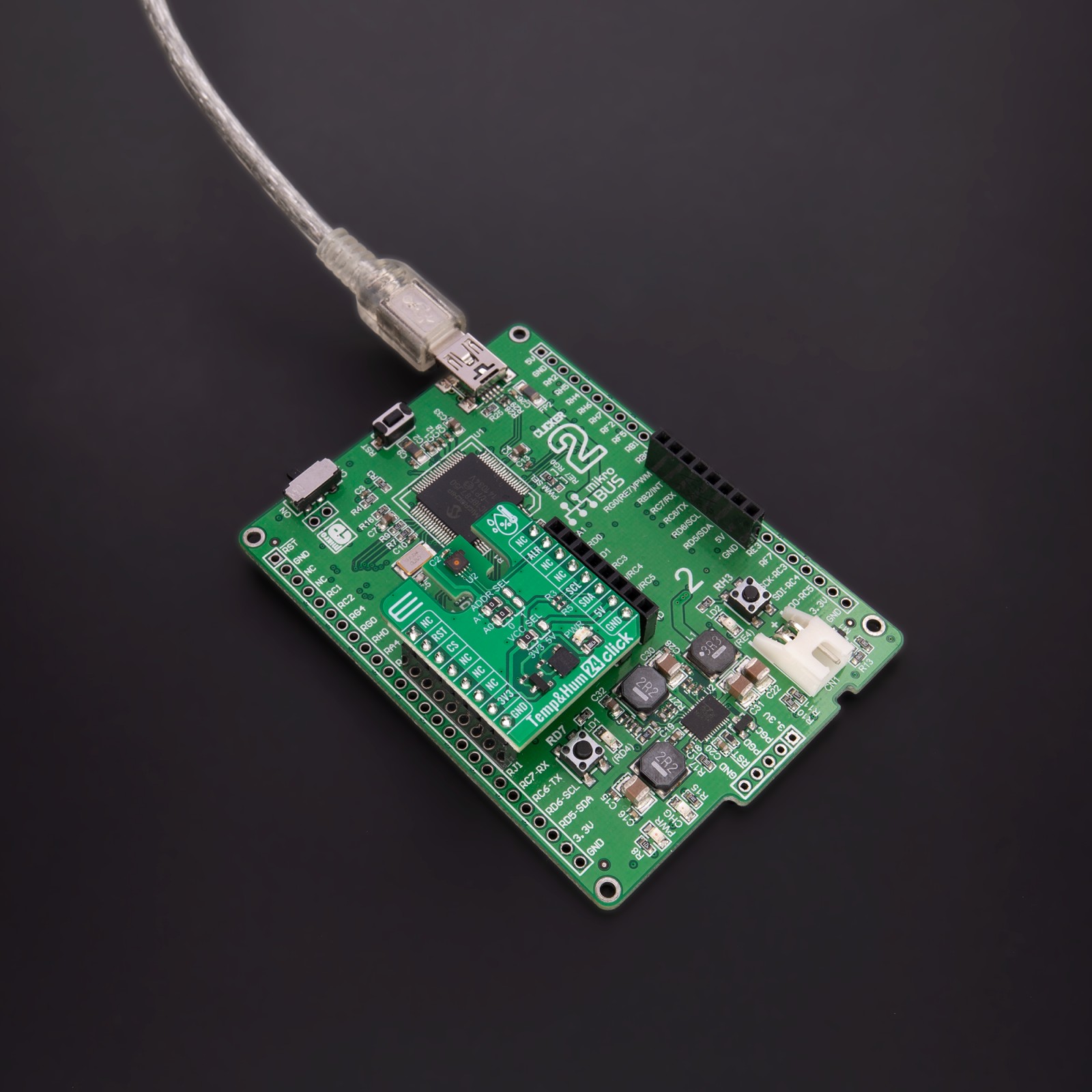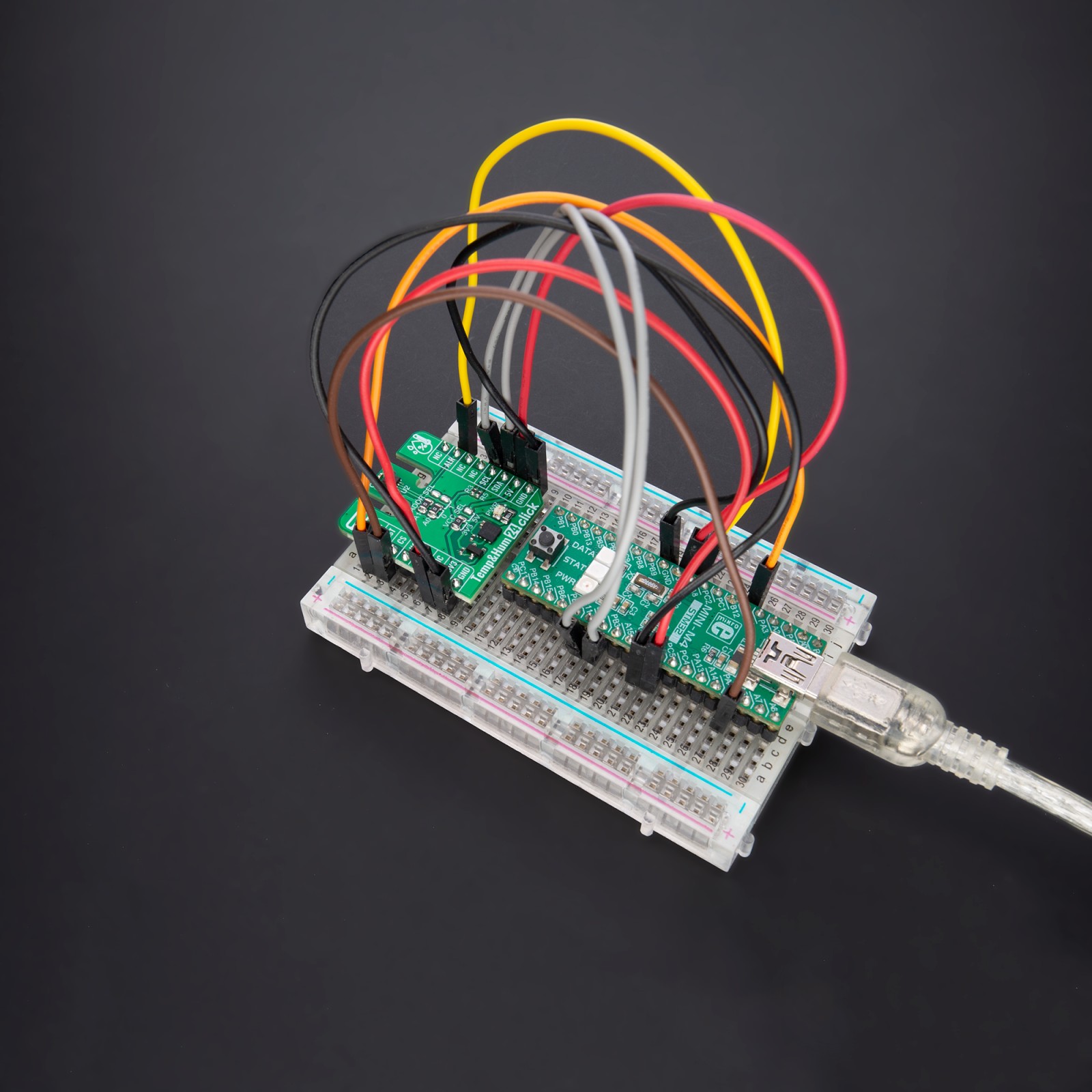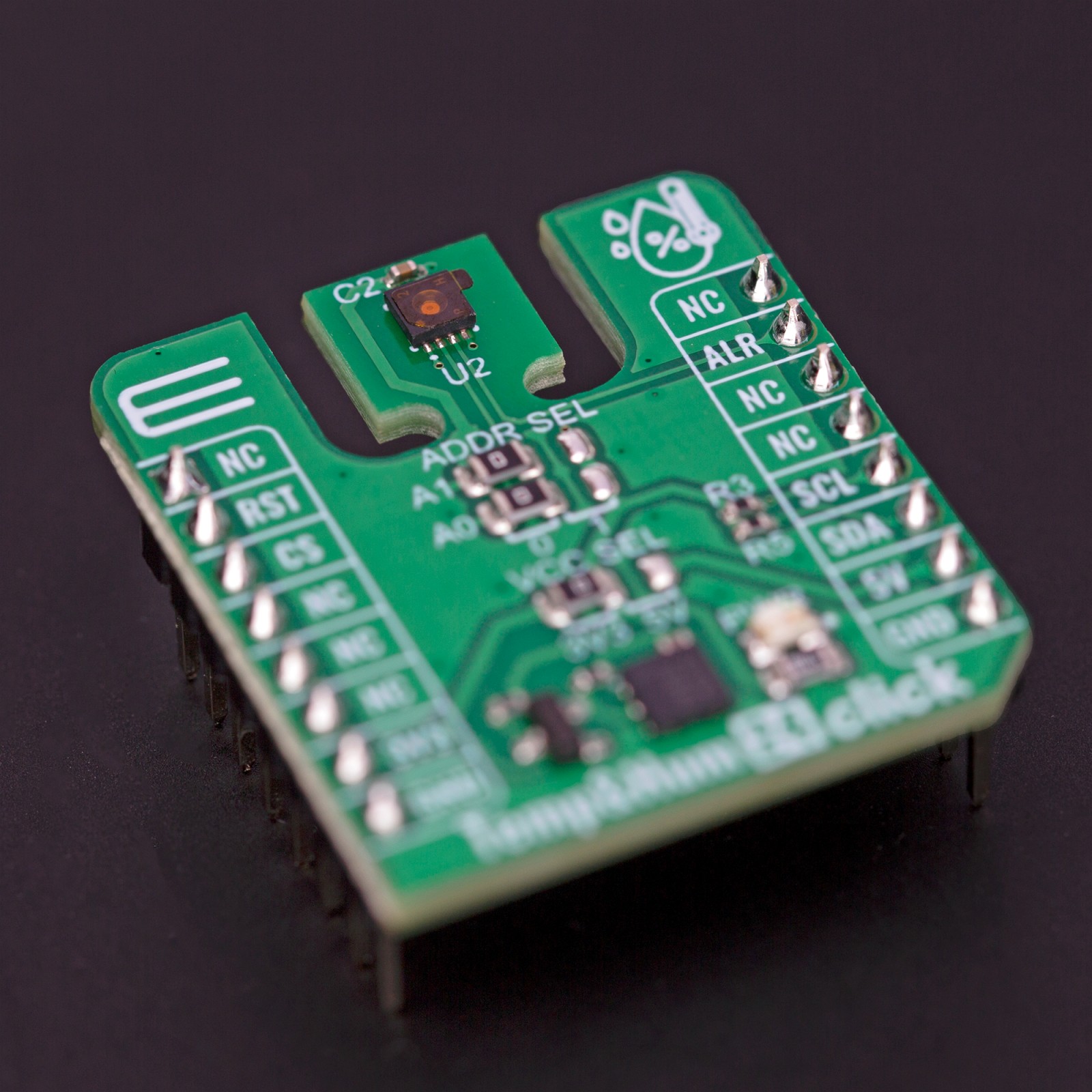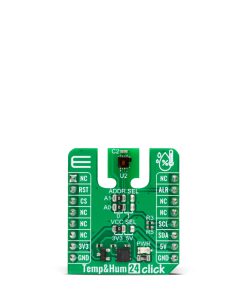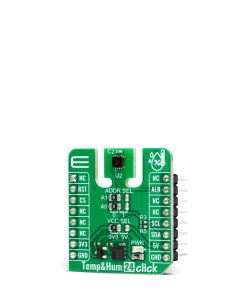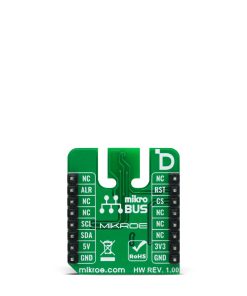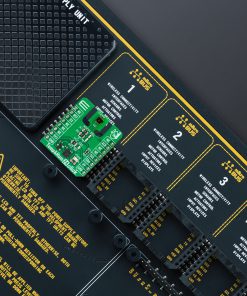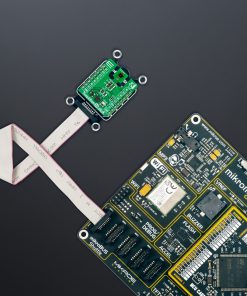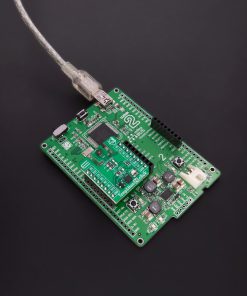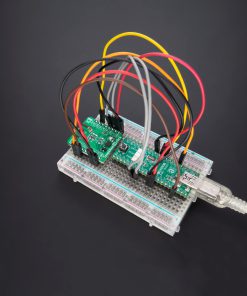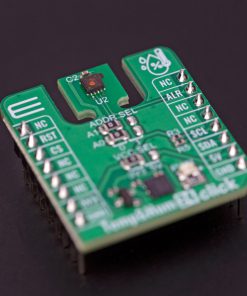Temp&Hum 24 Click
R260.00 ex. VAT
Temp&Hum 24 Click is a compact add-on board that measures the surrounding environment’s humidity and temperature. This board features the HDC3021, an integrated capacitive-based relative humidity and temperature sensor with a removable tape cover from Texas Instruments. The HDC3021 is characterized by its high accuracy (±0.5%RH and ±0.1°C over a wide operating temperature range) and high resolution, providing 16-bit data to the host controller with a configurable I2C interface. Offset Error Correction reduces RH sensor offset due to aging, exposure to extreme operating conditions, and contaminants to return the device to within accuracy specifications. The long-term stability and reliability, alongside other features, make this Click board™ ideal for developing various automotive temperature and humidity-related applications.
Temp&Hum 24 Click is fully compatible with the mikroBUS™ socket and can be used on any host system supporting the mikroBUS™ standard. It comes with the mikroSDK open-source libraries, offering unparalleled flexibility for evaluation and customization. What sets this Click board™ apart is the groundbreaking ClickID feature, enabling your host system to seamlessly and automatically detect and identify this add-on board.
Stock: Lead-time applicable.
| 5+ | R247.00 |
| 10+ | R234.00 |
| 15+ | R221.00 |
| 20+ | R212.68 |

